New Orleans, Louisiana
Published: February 6, 2018
By Erik Iverson
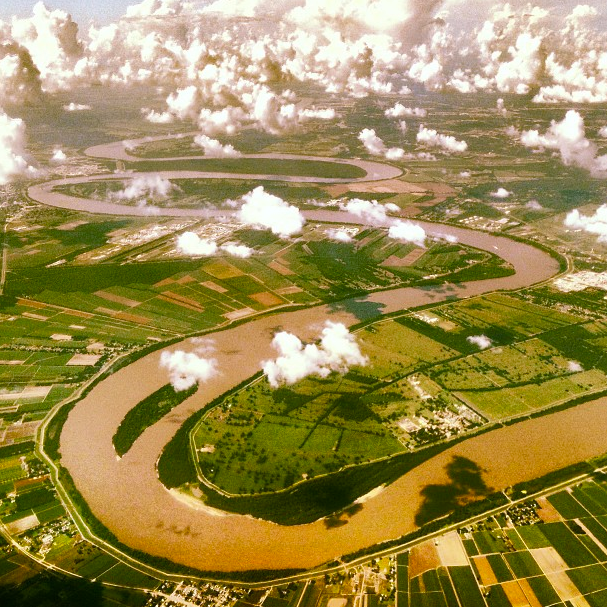
The Mississippi River north of New Orleans. (Photo: Erik Iverson; Instagram)
(stream/download) as an MP3 file
Living on Earth is giving a voice to Orion Magazine’s long-time feature, The Place Where You Live, where essayists write about the place they call home. This week, we travel to New Orleans, Louisiana, where ecology student Erik Iverson describes the beauty of his state’s fragmented deltas, and how this threatened land unites a people.
CURWOOD: Now another in the occasional Living on Earth/Orion Magazine collaboration, “The Place Where You Live.” Orion invites readers to put their homes on a map and submit essays to the magazine’s website, and we give them a voice.
[MUSIC: Edward Sharpe and The Magnetic Zeroes “Home” from Edward Sharpe and The Magnetic Zeroes (Rough Trade Records 2009)]
CURWOOD: We’re staying on the Gulf coast at a place dear to many people.
[MUSIC: Jelly Roll Morton, The Crave]
IVERSON: IVERSON: My name is Erik Iverson. I’m an undergraduate at Tulane University, studying ecology and evolutionary biology. I’m from the San Francisco Bay area originally, but for the last four years, I’ve made New Orleans my home. And I love it very much.
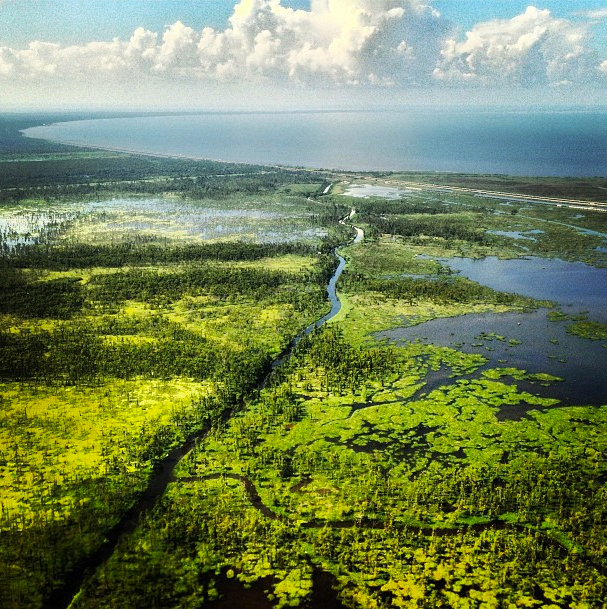
Cypress swamps ring Lake Ponchartrain and help protect communities from storm surges. (Photo: Erik Iverson; Instagram)
IVERSON: New Orleans really is sort of an island because it is isolated on all sides by water. On the north, there’s Lake Pontchartrain. To the south is the Mississippi River and there’s wetland on the east and west. You find that the land in this area is kind of a precious commodity, and so the shapes of the towns and cities mirror the shapes of the ridges in the landscape where people could find enough dry land to build on. We get around by causeway a lot. Most of the roads leading out of New Orleans are elevated up out of the swamps. You may feel like you’re driving on solid land, but that concrete is up out of the water to tell you that it’s actually a bridge.
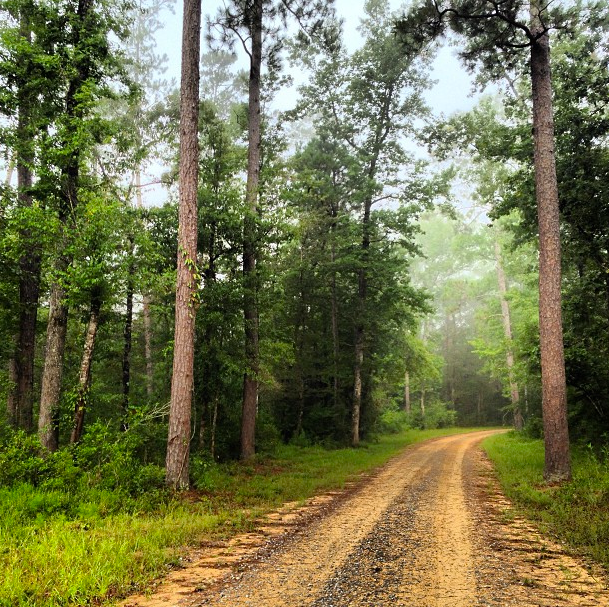
On drier land, pines grow, like this grove in the De Soto National Forest, MS. (Photo: Erik Iverson; Instagram)
IVERSON: Land loss is a humongous issue. It’s quite sad, actually, the way things are going down there. Thankfully the state is implementing this Coastal Master Plan to attempt to reverse land loss by the year 2050, and ultimately have zero net land loss, start gaining land again. But, with the Coastal Master Plan, the land that is going to be added is not going to be in the same place as the land that’s lost, so the shape of the state is changing all the time. And by 2050, when you look at that boot of Louisiana, it’s not going to look like that anymore; you’re going to see something very different.
This is the place where I live: New Orleans, Louisiana.
The Place Where You Live
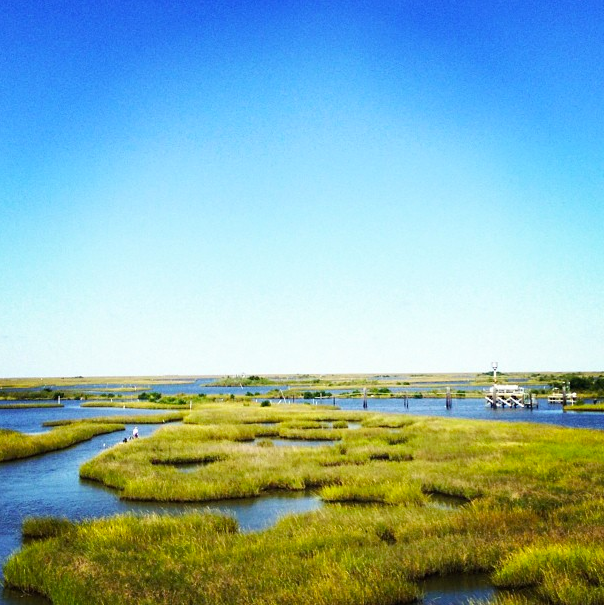
The marshes in the Barataria basin slip away with each passing year. (Photo: Erik Iverson; Instagram)
"A sense of place is the sixth sense, an internal compass and map made by memory and spatial perception together.” —Rebecca Solnit
New Orleans, Louisiana
Posted by Erik Iverson | September 8, 2014
IVERSON: Those who find comfort in the sweaty arms of New Orleans probably don’t fantasize much about life outside the levees. We are, in many ways, an island: an urban island pulled up from the swamps, a politically blue island in a sea of red, the northernmost outpost of the Caribbean’s cultural archipelago. Like all islands we are surrounded by water, and those waters rise menacingly with each passing year. It’s a refuge for folks of all kinds, but when I am tired of potholes, people, culture, and city-business, I look at those levee-walls, blind to the river beyond for our own unbearable flatness, and I feel trapped.
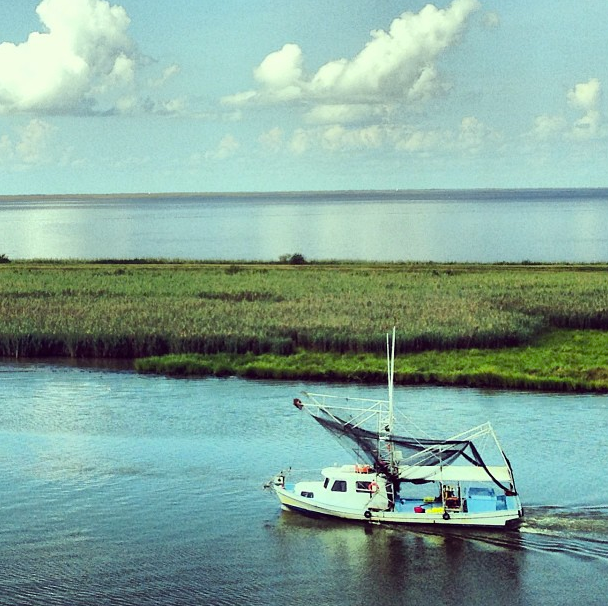
A shrimp boat heads to sea north of Venice, LA. (Photo: Erik Iverson; Instagram)
IVERSON: This island is, graciously, close to the mainland. Whenever I can I load up my little Ford with its awkward California plates and venture over bridges into Louisiana or Mississippi. Its not because I don’t love New Orleans—far from it—but because I love it enough to know when we should spend time apart.
The reach of the city is long. We’re in the De Soto, a wilderness of piney uplands and jungle-like bottomland hardwoods that’s been left to itself longer than the surrounding paper forests. In a black-water creek, shallow, sandy, old, and rich with tannins, we spend a naked afternoon with some new friends. We needn’t be worried; the threat of rain drove away any prudish locals, though its been nothing but beautiful for us. We all seem to have sensed that a rainy weekend in the woods was preferable to a rainy weekend in the city.
IVERSON: I could tell they were from New Orleans before we exchanged a word, and, once we spoke, I knew exactly which neighborhood. Geography is essential in such a flat space; we have only two dimensions to orient ourselves. Like all islanders we aggregate when set adrift, forming new islands on old connections to place. Wherever I go I find New Orleanians, or rather, we find each other, and friendship comes organically. Like a bottle of sand we carry this island with us, a reminder, a keepsake, a catalyst.
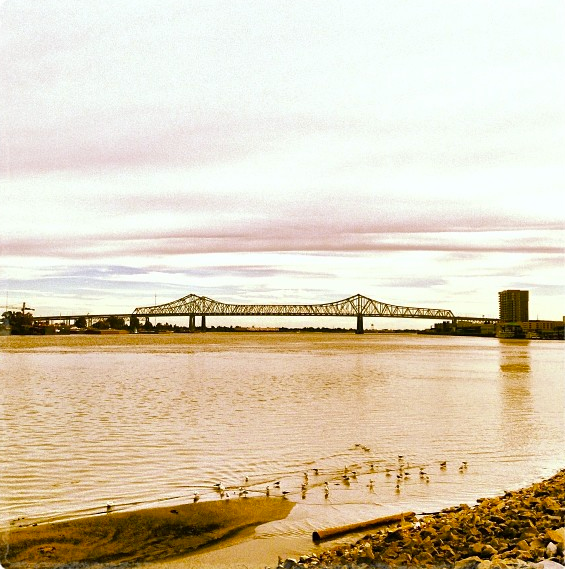
The Mississippi River, seen from New Orleans, LA. (Photo: Erik Iverson; Instagram)
CURWOOD: Erik Iverson, from New Orleans, Louisiana. And tell us about "The Place Where You Live." You can find details of our collaboration with Orion magazine – and learn how you can submit your own essay at our website, LOE.org.
Back to The Place Where You Live
Living on Earth wants to hear from you!
Living on Earth
62 Calef Highway, Suite 212
Lee, NH 03861
Telephone: 617-287-4121
E-mail: comments@loe.org
Newsletter [Click here]
Donate to Living on Earth!
Living on Earth is an independent media program and relies entirely on contributions from listeners and institutions supporting public service. Please donate now to preserve an independent environmental voice.
NewsletterLiving on Earth offers a weekly delivery of the show's rundown to your mailbox. Sign up for our newsletter today!
 Sailors For The Sea: Be the change you want to sea.
Sailors For The Sea: Be the change you want to sea.
 The Grantham Foundation for the Protection of the Environment: Committed to protecting and improving the health of the global environment.
The Grantham Foundation for the Protection of the Environment: Committed to protecting and improving the health of the global environment.
 Contribute to Living on Earth and receive, as our gift to you, an archival print of one of Mark Seth Lender's extraordinary wildlife photographs. Follow the link to see Mark's current collection of photographs.
Contribute to Living on Earth and receive, as our gift to you, an archival print of one of Mark Seth Lender's extraordinary wildlife photographs. Follow the link to see Mark's current collection of photographs.
 Buy a signed copy of Mark Seth Lender's book Smeagull the Seagull & support Living on Earth
Buy a signed copy of Mark Seth Lender's book Smeagull the Seagull & support Living on Earth

